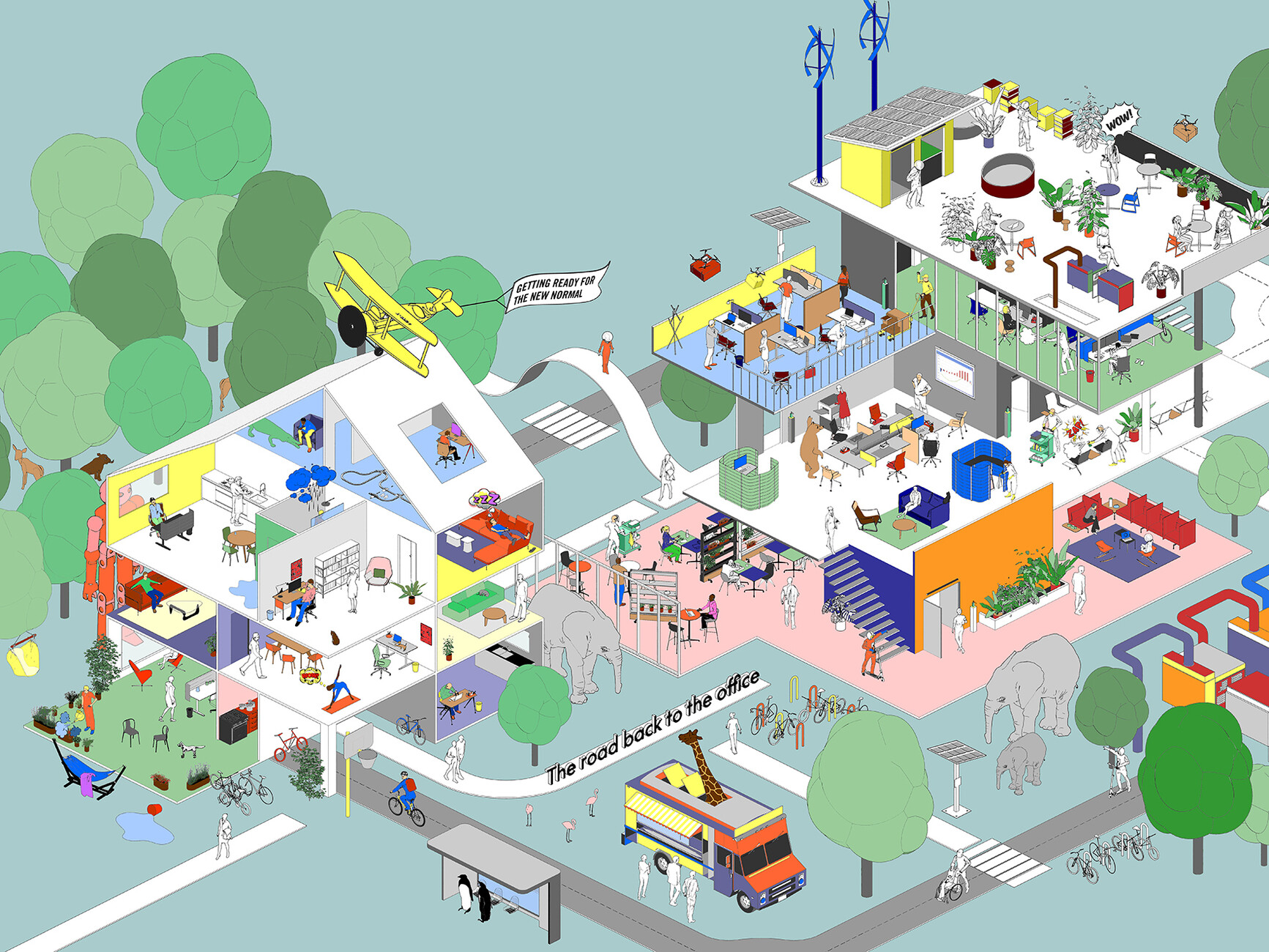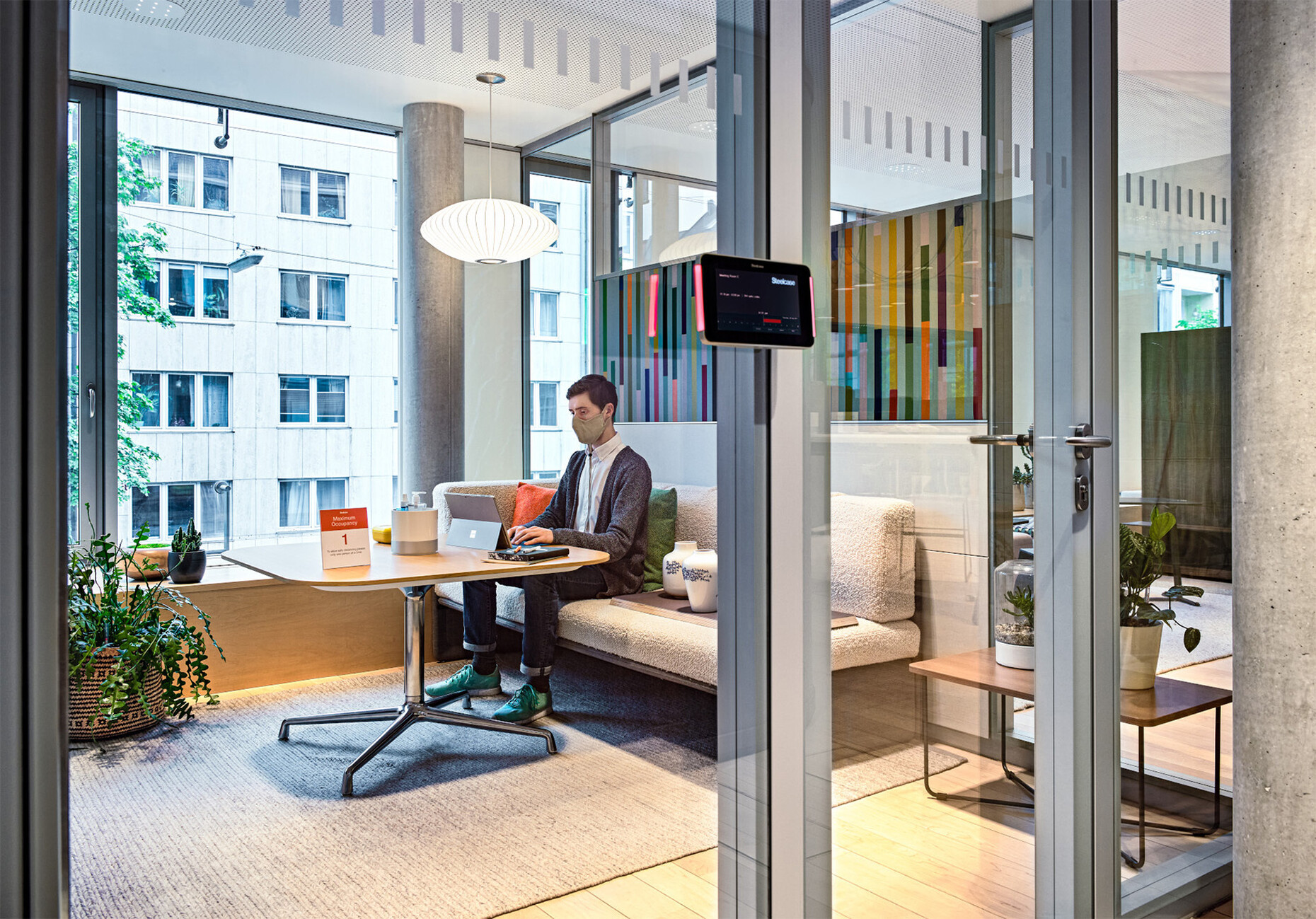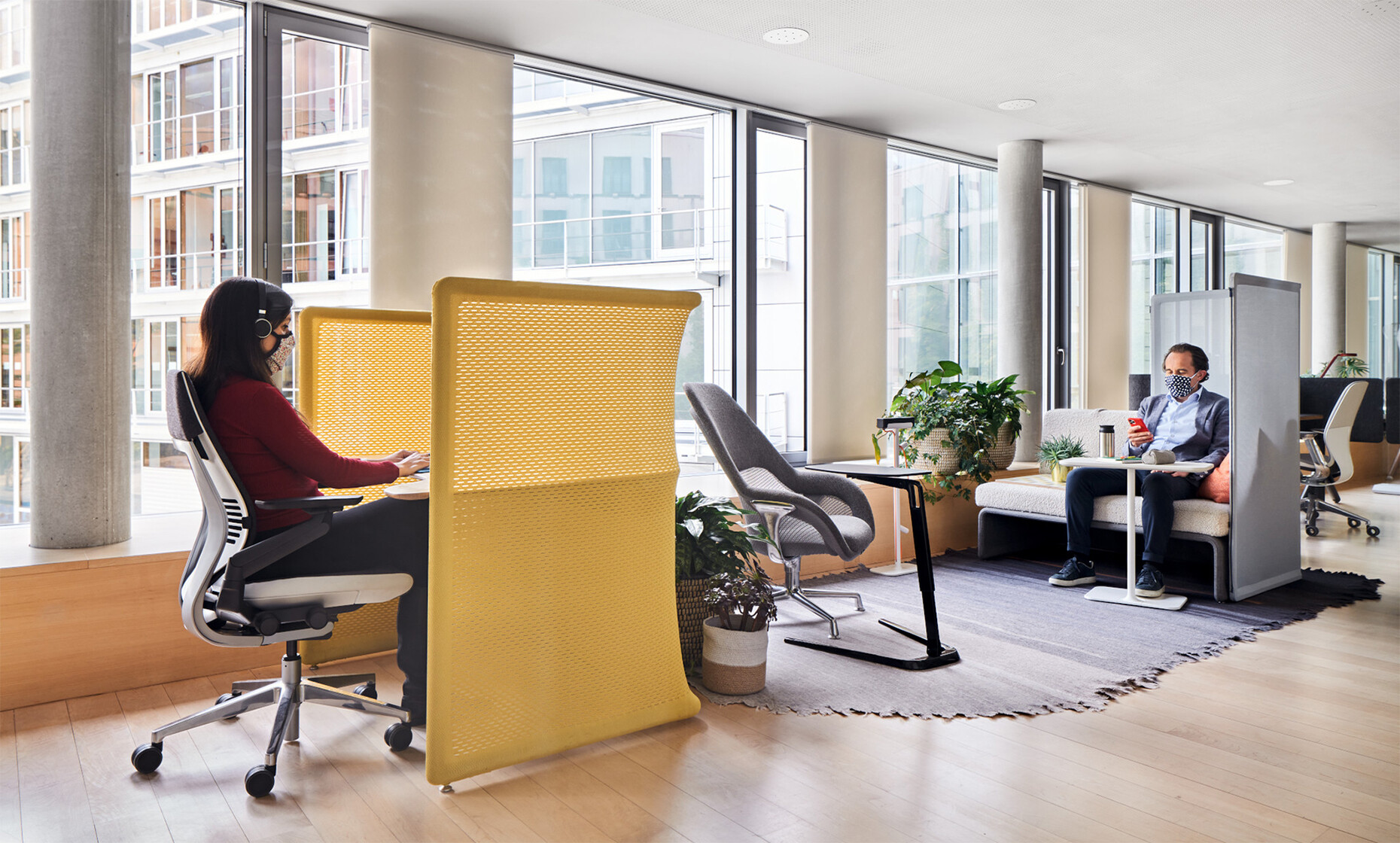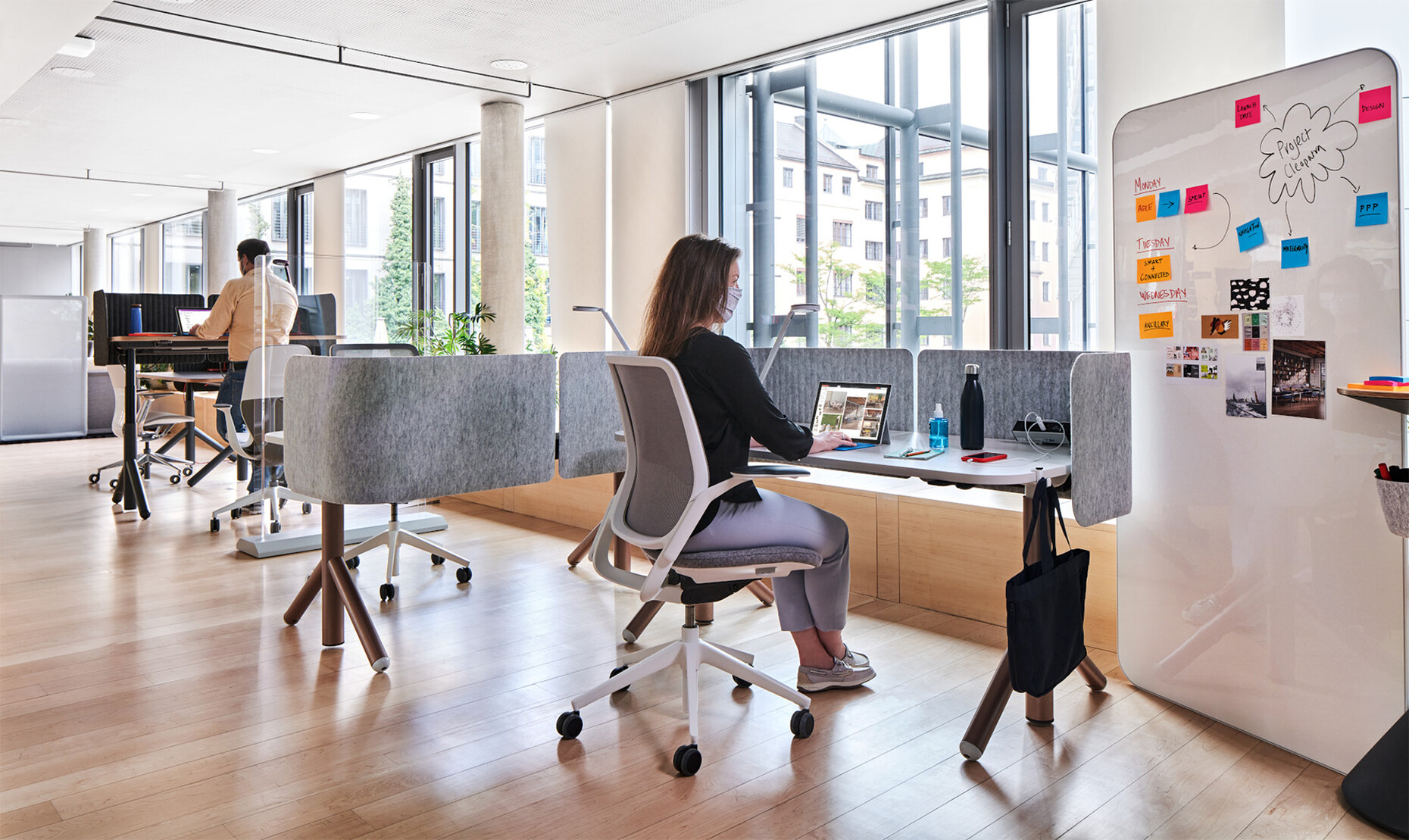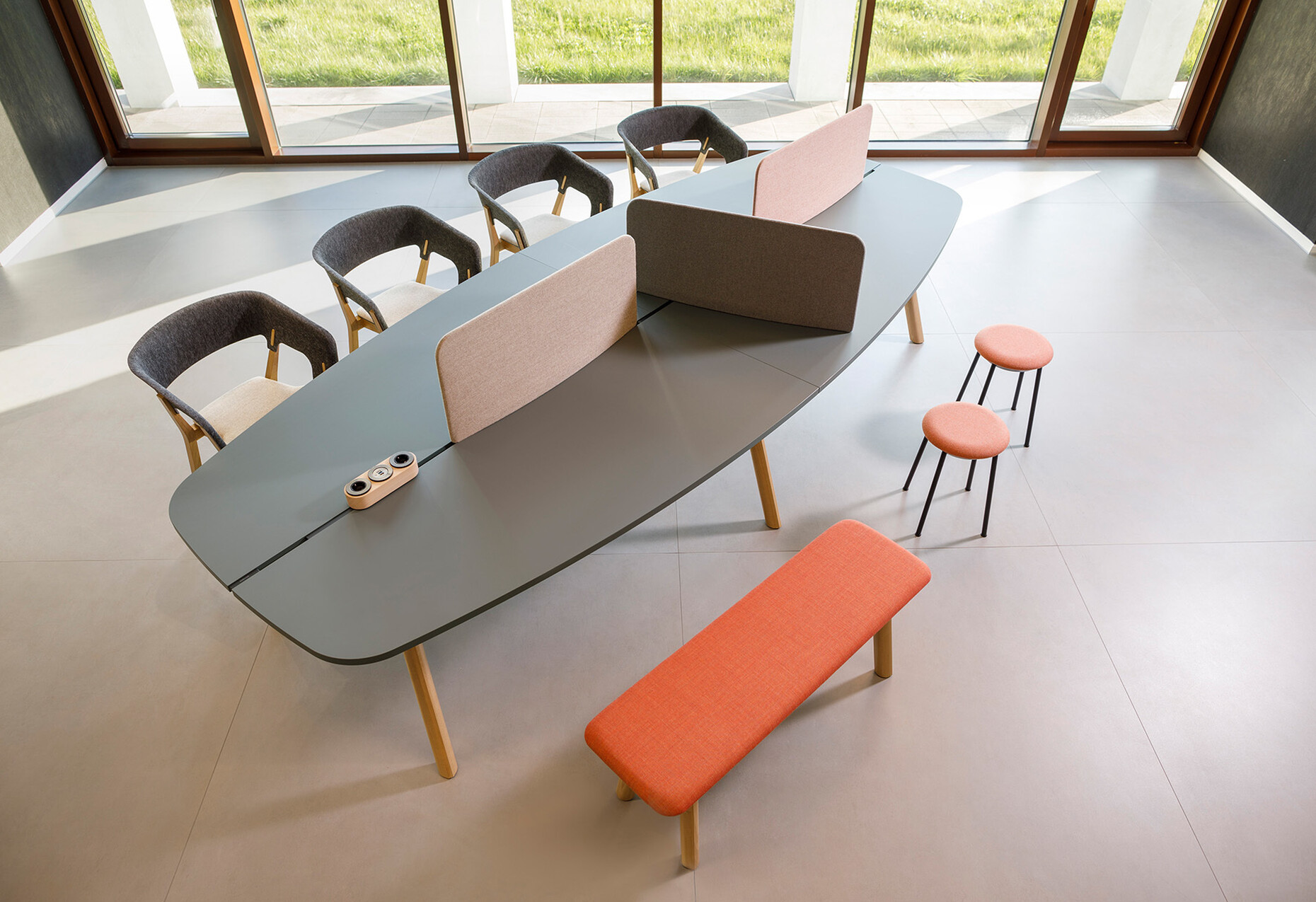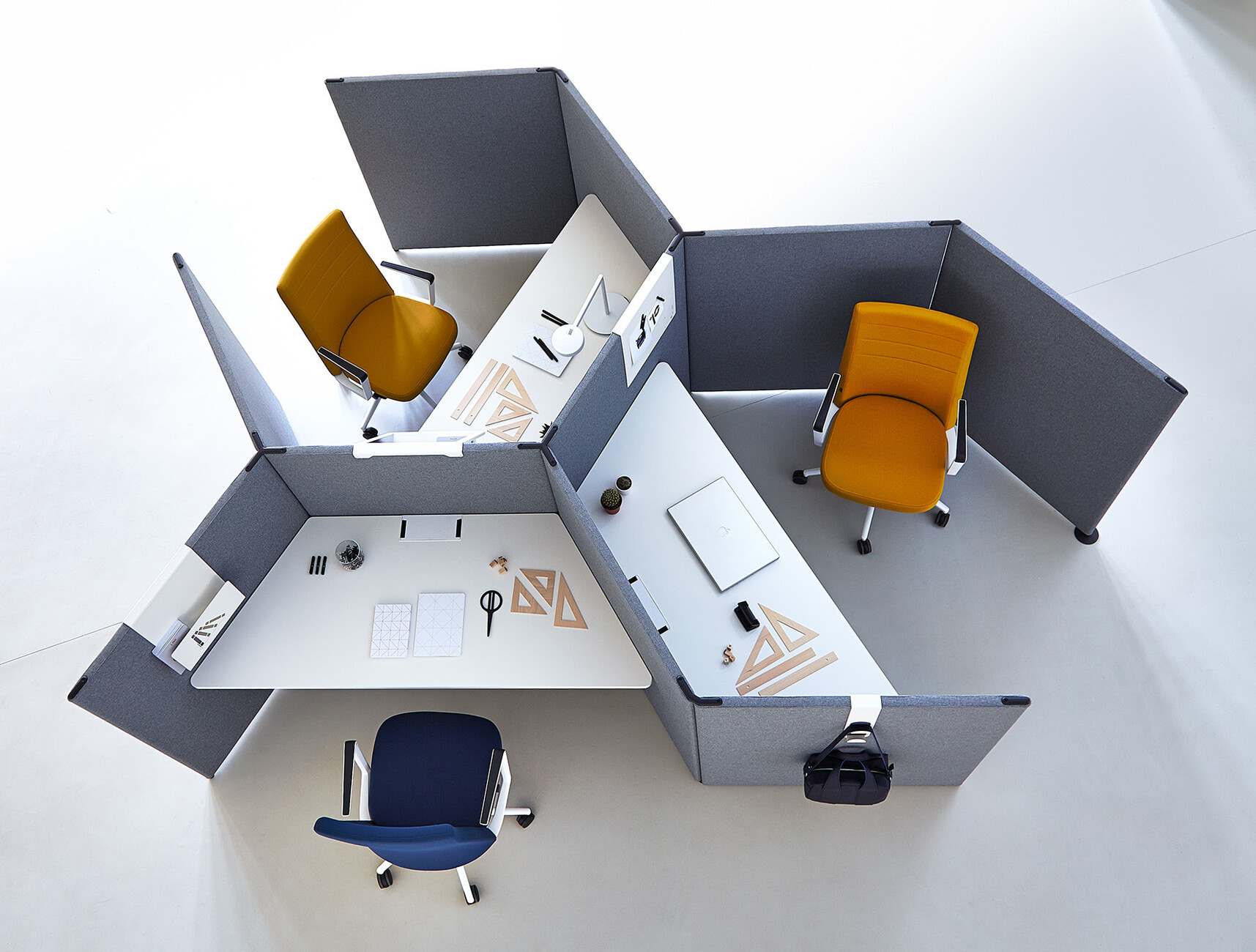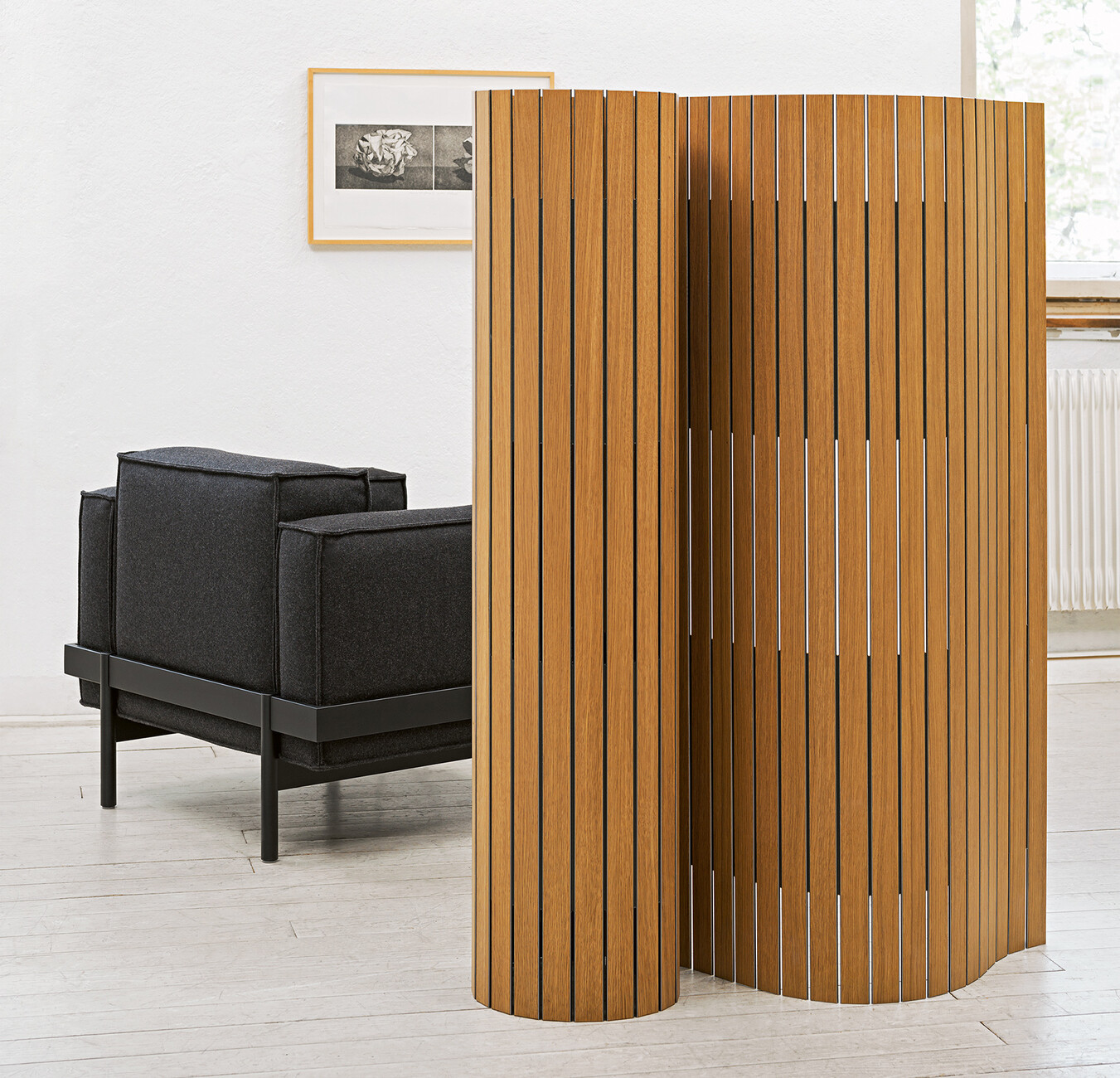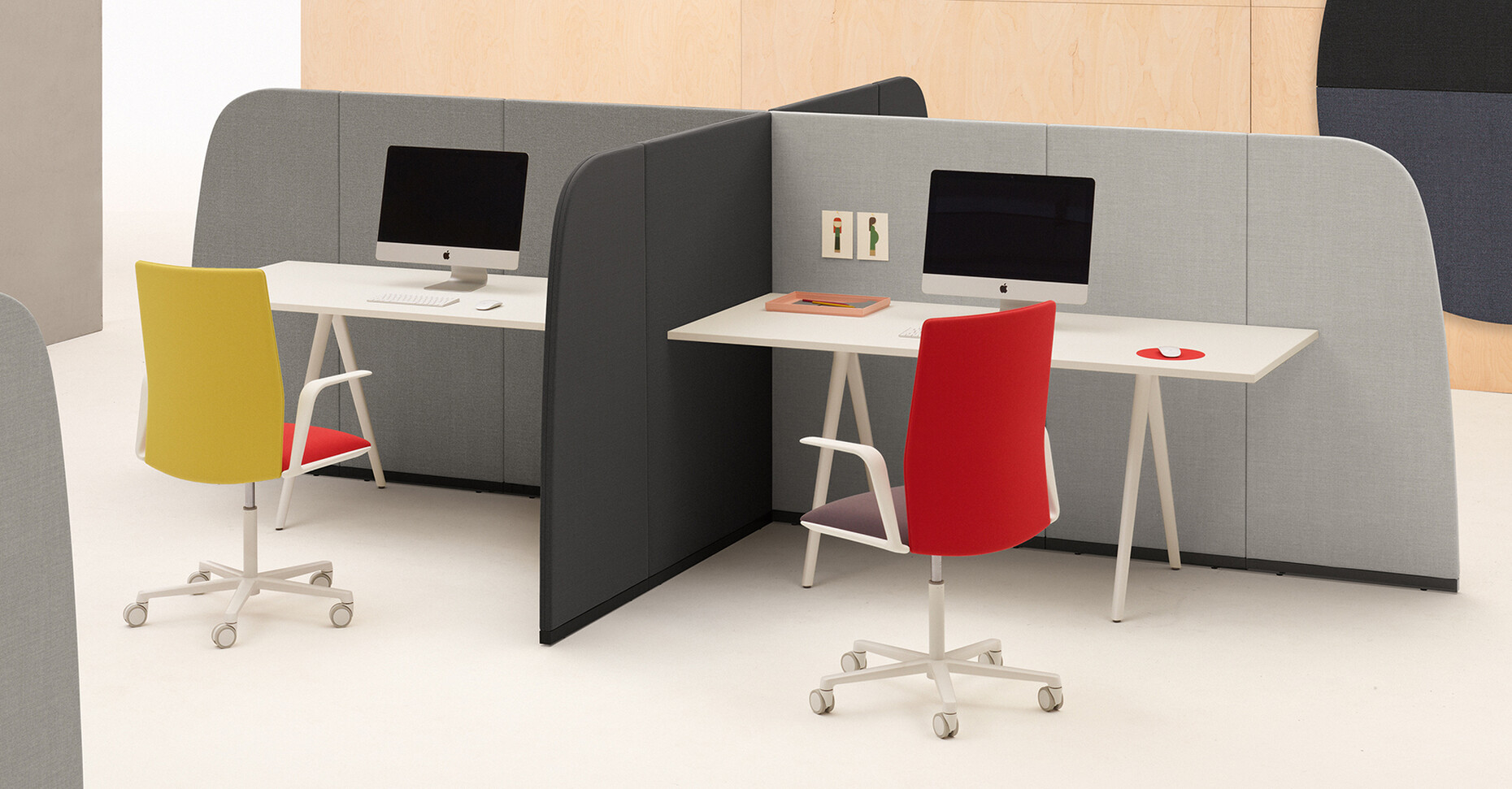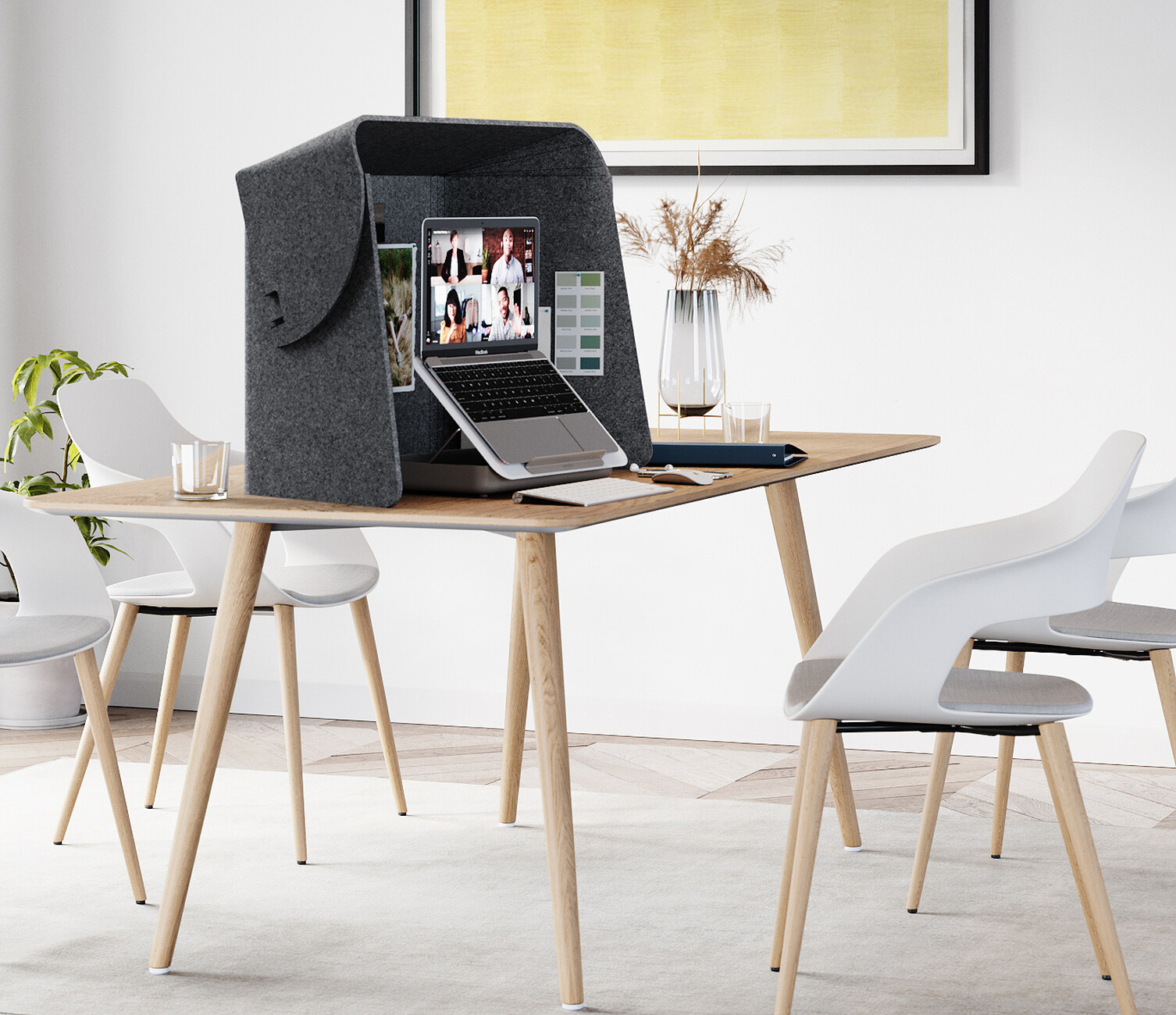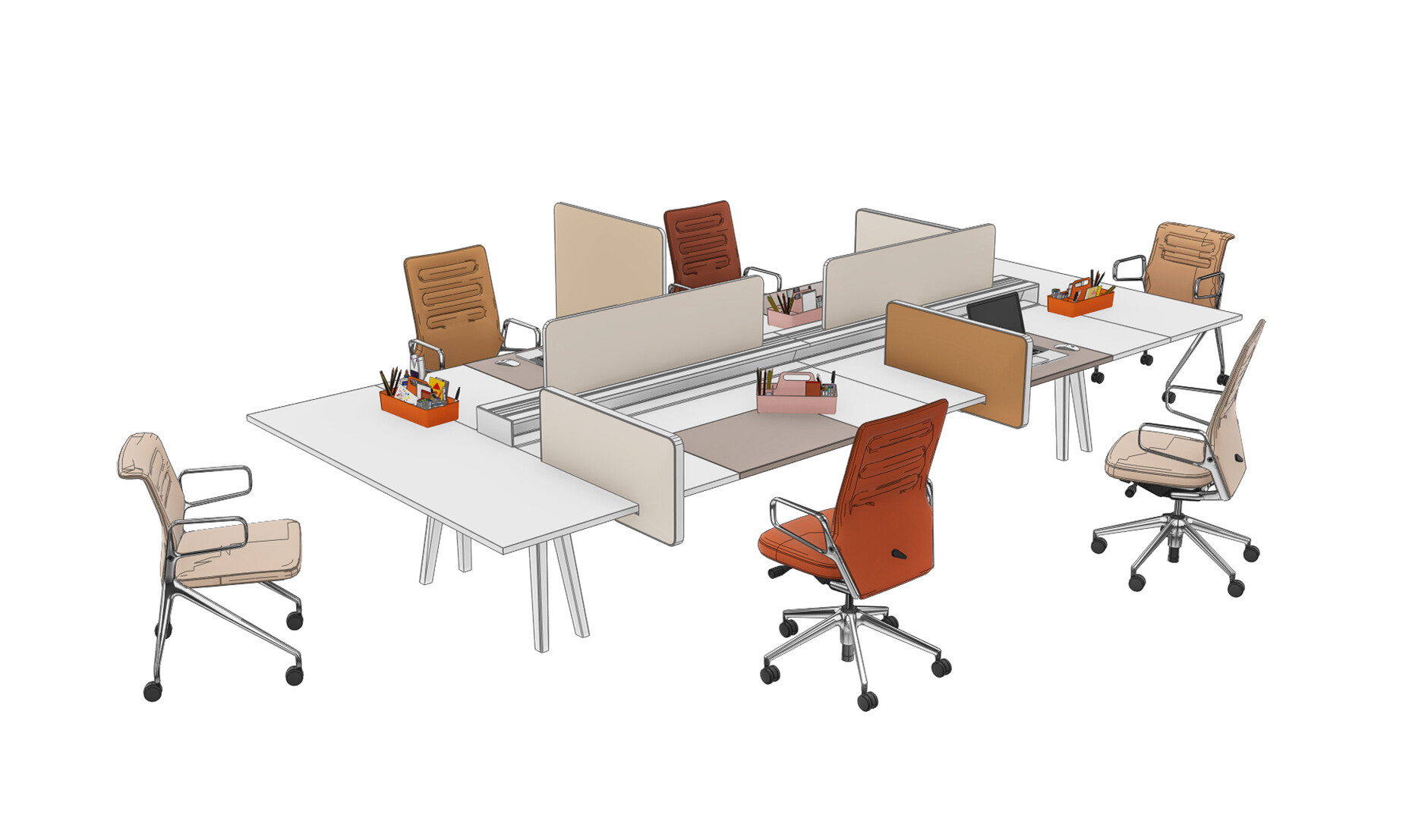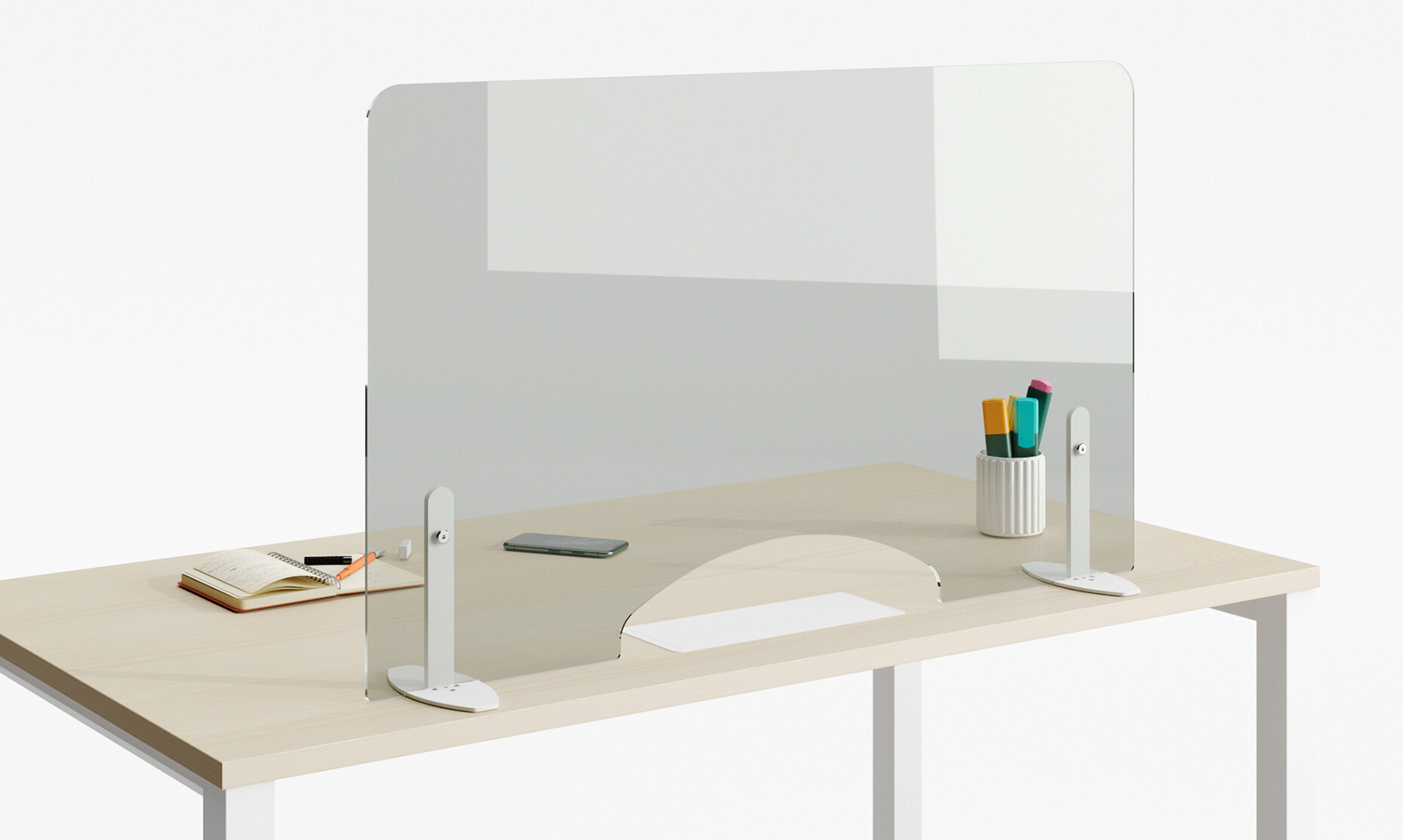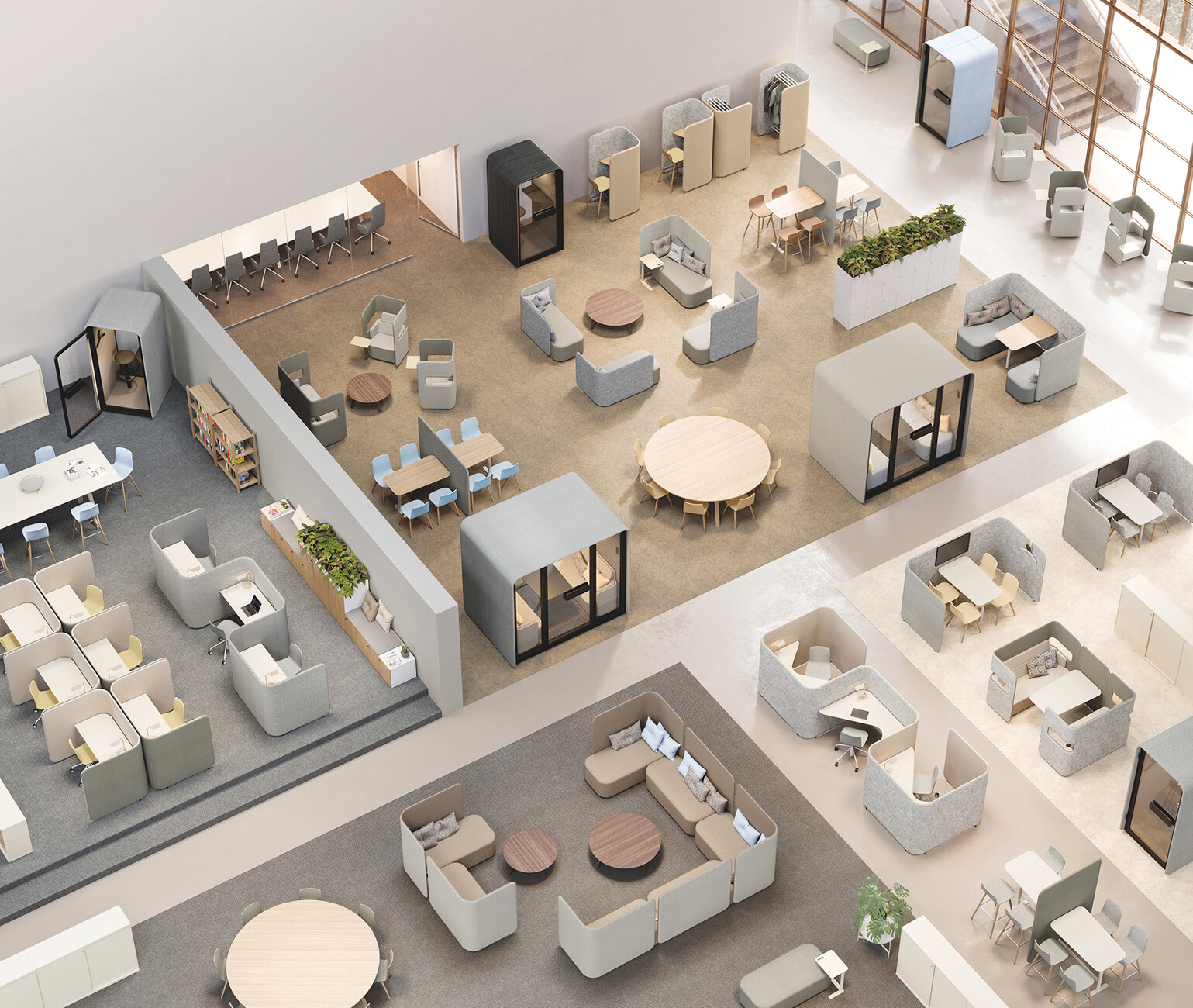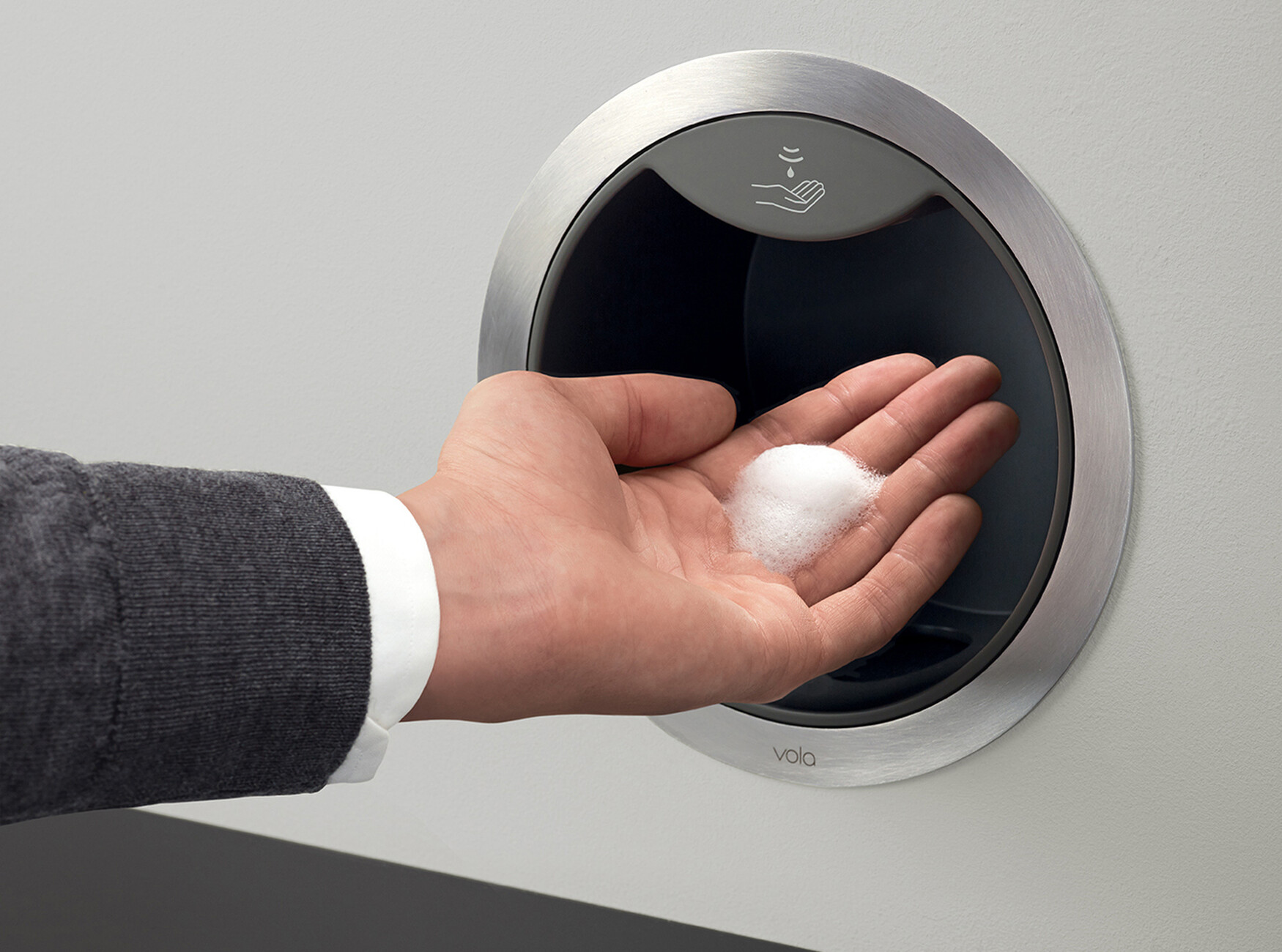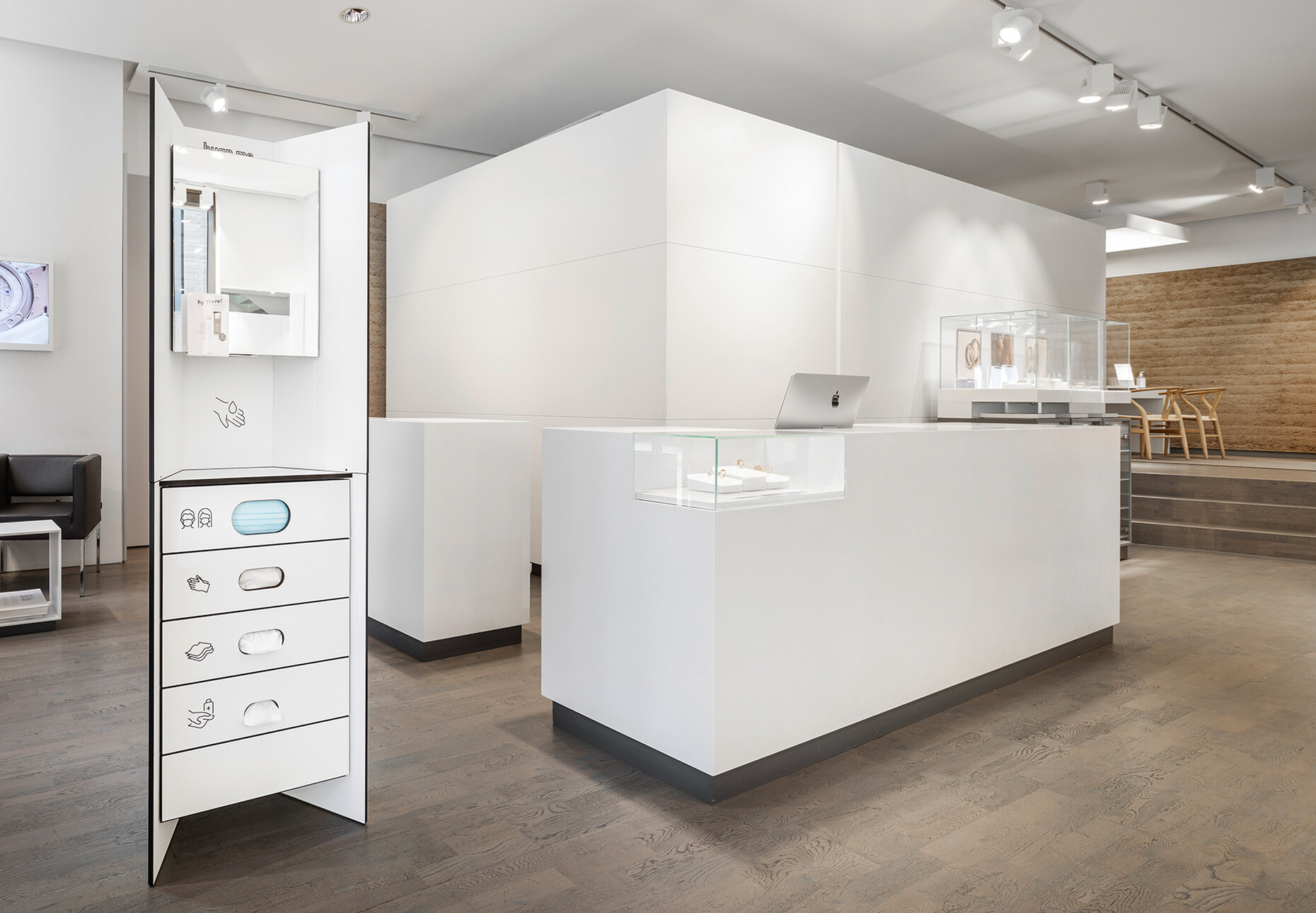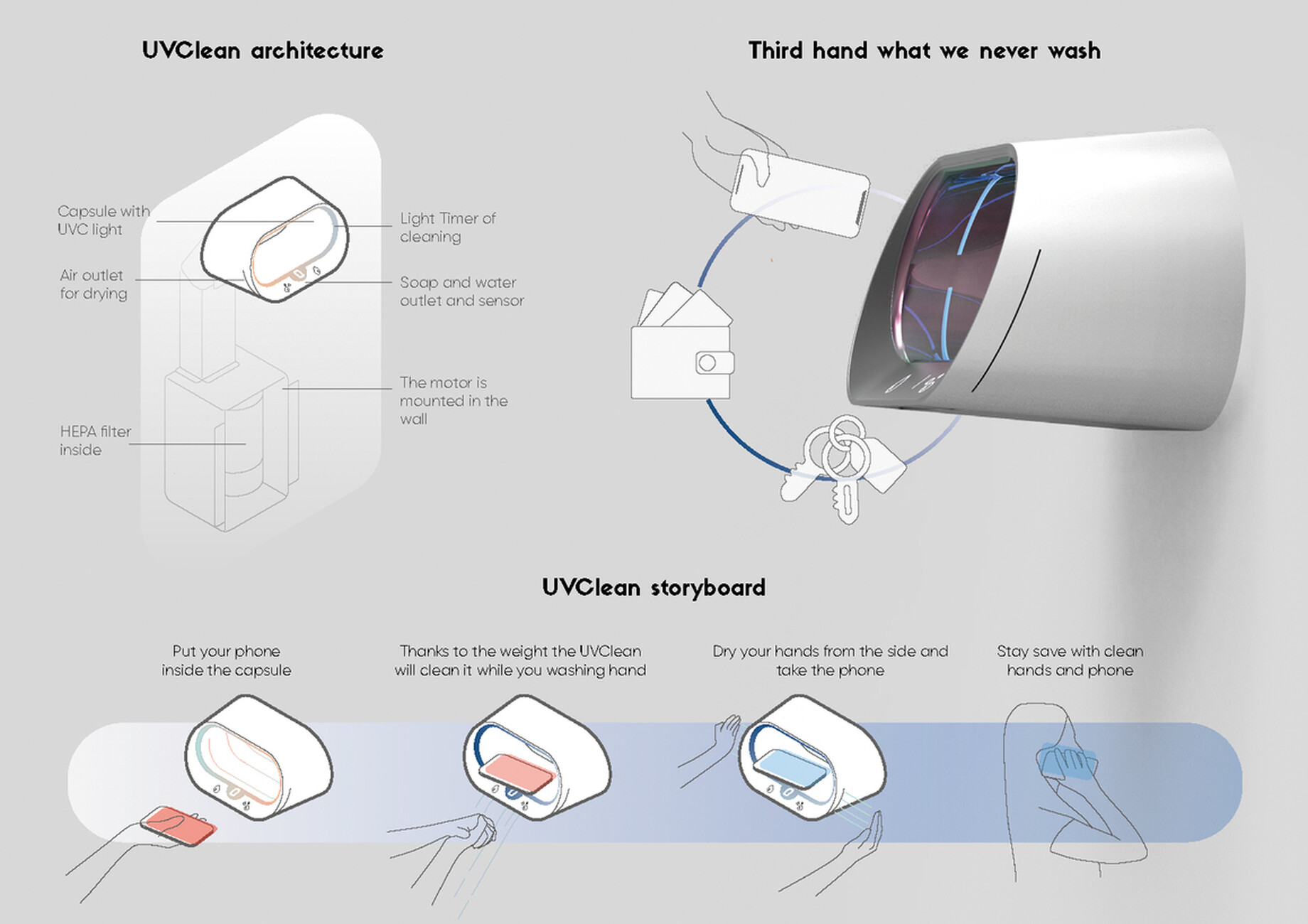NEW WORK
Back to the office
One thing is for sure: The home office has now been firmly established as a place of work that is easily equal to any other place of business. The experts agree that we will be continuing to work from home even once the COVID-19 pandemic has subsided – especially when it comes to activities that require a quiet, concentrated atmosphere. Aside from this, the virus has washed away with a great many certainties. In many cases it forces us to reinvent how we work. Researchers, designers, architects and not lastly producers of office furniture have already weighed in on the debate with suggestions and predictions. If more people stay away from the office to compile presentations, write concepts and look through files, then fewer work places will inevitably be required by the companies. As a consequence, office spaces may shrink in the medium term. Digital booking systems and occupancy schedules make it possible to oversee which members of staff are in attendance in which areas of the office at all times. One solution for larger companies could be to opt for smaller offices spread across different regions, so-called hubs, that are easier for employees to reach. This will eliminate journeys taken in crowded trains and busses, and fewer people will mingle in the workplace. The character of central offices and corporate headquarters will without doubt continue to change, with the trend going away from the traditional office and towards the meeting place, where ideas can be bounced around and social interaction can ensue. Because the pandemic has once more proven that the old chestnut continues to hold true: A working world does not function entirely without personal contact in the long run. Spontaneous conversations, chance encounters and an occasional change of place foster creativity, well-being and productivity.
In practice
What could the safe, hygienic work environment of the future look like? Furniture makers such as Vitra, Steelcase, Wilkhahn or Sedus, as well as planning offices like Designfunktion have developed scenarios and guidelines. The publications are available online fuss-free via their websites signed to support companies in adapting their spaces to the hygiene specifications and distancing rules. They offer pragmatic advice when it comes to reconfiguring work spaces, especially with regards to reducing density. Further measures include: reducing the occupancy rate of meeting rooms, more intensive cleaning, and providing staff with training as relates to safe social interaction. Companies may also consider hiring a barista in order to avoid the coffee kitchen getting too crowded. Markings remind staff to keep their distance. A range of products already exists that is able to make working environments safer. For example, USM has added an acrylic glass screen to its furniture system that may simply be docked on to existing USM furniture items. Almost all furniture makers already offer room dividers and textile screens for separating work stations in any case. To this end, the designer duo Kaschkasch has recently designed the "Creva desk" table system for Kusch+Co, which can be customized with electrification units, visual protection panels and trays. Contactless solutions with sensors, for example for fittings and soap and disinfectant dispensers such as those by Vola, hygn.me by Conmoto or Tekna, are currently in very high demand. Covid-19 has also brought well-known insight back into focus. For example the fact that certain metals such as copper kill germs – which means that door and window handles made of the copper alloys brass or bronze are not just stylish, but also hygienic. A door handle with an ergonomically designed angled shape like FSB's Model 1155 also helps to reduce the risk of infection, as it can also be operated with the elbow and is available with the FSB Anti-Infection Coating antibacterial surface coating. Lighting solutions such as the Integralis technology by Artemide and air purifiers help wipe out viruses and bacteria with the aid of UVC light. The disinfection of our constant technical companions is also an important issue: sanitary manufacturer Roca is offering a UV-box under the name UVClean with an integrated water outlet, soap dispenser and hand dryer. This allows users to disinfect their mobile phone while washing their hands.
So far, so clean. Nevertheless, companies will first and foremost have to consider the needs of their staff when deciding which measure to take and which products to employ. This works best when staff are involved in the changes and asked for their opinion. Because only if they feel comfortable at work and in meetings with colleagues will they be happy to be coming into the office again.
